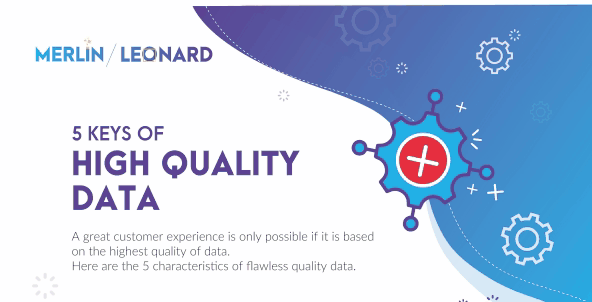

Content Writer for Whistle with multidisciplinary experience spanning over a decade.
You run a report. Something feels off. The conversion rate looks higher than expected. Time-in-stage numbers don’t align with what your team remembers. You double-check the CRM, scan through a few deal histories, and confirm your suspicion: the data isn’t just imperfect – it’s misleading.
This is how good teams waste good time.
Sales operations teams rely on data workflows to simplify reporting and automate decisions. They’re built to reduce manual effort and create consistency across a pipeline. But when a workflow is built on flawed assumptions, the result is the same as not having one at all. Often worse, because the errors are harder to spot.
This blog exposes the hidden risks of CRM automation and the lessons that followed. If you’ve ever assumed your pipeline data was clean only to find cracks beneath the surface, this will feel familiar.
The goal was simple. Track how long deals are spent in each sales stage. From qualified to proposal sent to closed won. The idea was to automate it. No rep input needed: just clean timestamps and consistent logic.
We built a workflow that triggered when a deal moved to a new stage. At each transition, it recorded the date in a central sheet. From there, we could measure time-in-stage, compare performance by rep, and highlight funnel drop-off points. The source of truth? HubSpot’s “date entered stage” fields.
Everything looked good. The automation worked without error messages. Data pulled through. Reports populated. Everyone trusted what they were seeing. The numbers made sense. Until they didn’t.
It didn’t break all at once. Which made it harder to catch.
A few inconsistencies showed up in weekly reporting. A deal showed negative time in a stage. Another appeared to have skipped half the pipeline. A third showed 18 days in “proposal sent” despite only being created a week earlier. The data was still flowing. But it wasn’t right.
It took time to realize this wasn’t a one-off problem. It was baked into the structure of the workflow.
The entire system relied on HubSpot’s “date entered stage” field. At first glance, it seemed reliable. HubSpot automatically logs the moment a deal enters a new stage. But that log depends on accurate deal movement. And deal movement depends on people.
Sales reps often batch their updates. A deal might sit in “qualified” for days but only be marked as such after a call wraps. Or it moves forward two stages at once, skipping the one in between. In both cases, HubSpot tries to apply logic retroactively. That means the timestamp is often an approximation, not a record of what actually happened.
Because we never validated those fields, we assumed they reflected real-time movement. In truth, they reflected the timing of CRM updates, not customer behavior.
Even with perfect automation, workflows are built on top of how humans work. And humans don’t always follow instructions.
Some reps updated their pipelines at the end of each day. Others waited until the end of the week. A few admitted to skipping updates altogether unless reminded. None of that was malicious. It just wasn’t structured.
That meant the automation was often capturing corrections, not actions. Instead of logging “deal moved to proposal sent,” it was logging “rep finally updated pipeline to reflect proposal sent two days ago.”
These small lags compounded over time. The result was a report that appeared precise but was quietly built on approximations.
Then there were the edge cases.
Some deals moved backward. Others skipped stages entirely. A few were disqualified, revived, and requalified. None of that was unusual. But our workflow didn’t account for it.
It assumed a clean, linear sequence. It didn’t pause to check whether deals were skipping stages or re-entering old ones. And it certainly didn’t adjust for deals that were fast-tracked. So every exception introduced a new inaccuracy.
From the outside, the system looked like it was working. But the more we tested the data against actual deal behavior, the more we found mismatches. It wasn’t that the workflow had failed to run. It had run exactly as designed. The problem was that the design didn’t match reality.
By the time we traced the issue, the report had already been shared. Teams had already made decisions based on false assumptions. No one caught it because the numbers looked clean.
Fixing the issue took hours. We had to rebuild the workflow logic, run spot checks on hundreds of deals, and create a validation step that checked whether a stage change was manual, automatic, or overdue. The bigger cost, though, was confidence. Once you see that a report was built on flawed data, it becomes harder to trust the next one without double-checking everything.

Data fields are rarely as simple as they seem. A timestamp might reflect a system update or a manual change applied after the fact. A status field might default to a value that no one actually intended to use. Even something like “stage entered” can behave differently depending on whether the deal was created through an integration or updated by a rep.
This matters because workflows often rely on these fields without context. If a report assumes that a timestamp reflects real-time activity, but the field is delayed or repurposed, the result is misleading. Knowing the name of the field isn’t enough. You need to know how it gets filled in, by whom, and under what conditions.
Accurate workflows start with understanding how the data is created, not just what it looks like in a dashboard.
A workflow can be technically flawless and still give you the wrong answer. If it’s built on faulty assumptions, the logic will execute exactly as designed and still miss the mark.
You have to test with real data. If your automation is based on a specific timestamp or trigger, compare that data against actual deal behavior. Don’t just check a few examples that support your logic. Test edge cases. Look for patterns that break it. And keep testing as your sales motion shifts.
Assumptions are not the problem. Untested ones are.
No CRM is perfectly updated. Sales reps move fast, and data entry is rarely their top priority. Some update in batches. Others rely on habits that differ by territory or channel. And a few will skip steps entirely, especially if the system doesn’t align with how they work.
Workflows have to reflect this reality. A system that depends on consistent manual input will fail if that input isn’t built into the process. Instead of hoping for perfect behavior, build in prompts, surface missing fields, or give visibility into skipped steps. Create tools that guide people, not punish them.
Clean data is a result of good systems and habits. It doesn’t happen by accident.
Automation should serve accuracy, not override it. A fast workflow that produces unreliable results is worse than a slow one that gets it right.
Sometimes the best first step is manual. Spot-check a few deals. Track the data points yourself. Look for inconsistencies before building automation around them. This gives you clarity on what’s working and what’s not. Once you’re confident in the structure, you can layer in automation without losing trust in the output.
Better to go slower at the start than to fix avoidable errors later.
Not every data point needs to be tracked. And not every metric helps you make better decisions. The more you measure, the more noise you introduce unless your system is built to handle it.
Focus on a few key indicators that are both reliable and relevant. Start with what directly reflects performance. Use those numbers to guide your workflow design. Everything else can come later, once the core structure is solid.
Simplicity makes validation easier. And clarity always outperforms complexity.
Workflows should be built for the real world. That means anticipating delays, irregularities, skipped steps, and edge cases. They should be monitored regularly, tested with live data, and backed by a system of checks that catch anomalies before they reach leadership reports.
Simple is better. Validated is best.
The right tools can help — but only if you understand the behavior and structure behind the data you’re working with.
The riskiest part of a bad workflow is that it often appears to be working.
Data accuracy is about designing workflows that hold up when things are messy, irregular, or incomplete. You’ll get more value from something basic that reflects real behavior than from something complex that assumes ideal conditions.
Most of the time, what breaks a workflow isn’t a bug. It’s a blind spot.
At Whistle, we’ve seen firsthand how small errors in data logic can cost teams time, momentum, and clarity. We help sales teams build systems that don’t just automate workflows but reflect how deals move. If your reporting looks right but feels off, we can help you find out why.


© Copyright – Whistle 2023